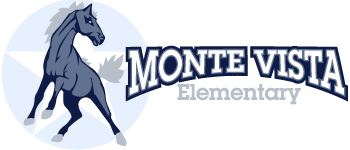Digital Citizenship
All students and employees of Jordan School District are instructed concerning responsible use of technology devices, the district network, and online etiquette.
In order to use district supplied technology devices and gain access to the district’s computer network each year, all students and employees of Jordan School District are required to sign an acceptable use agreement. This documents the users understanding of, and willingness to comply with, district policies as outlined therein.
Access to school and district networks and digital resources is a privilege. Any user who is found to be in violation of district technology guidelines or agreements is subject to the Jordan School District disciplinary policies. This involves an investigation process, and appropriate actions as dictated by the respective findings. For students this most often takes the form of meetings with school administrators and parents, and includes the possible loss of access to technology at the school, suspension, or other actions as prescribed by policy.
Online Student Safety
At a local school level, all teachers are provided with annual training regarding Internet safety. This is usually conducted by the school administration at the beginning of the school year.
Additionally, from a district level, all teachers have been made aware of multiple professional programs available to which they have access. All teachers are encouraged to integrate these programs into their classroom curriculum. Training on these programs is available from district level technology specialists upon request.
The most important online student safety tool for any classroom is direct adult supervision. This may take the form of direct in class monitoring through classroom circulation, or it may involve remote monitoring through the use of various software programs or monitoring tools.
Filtering
Filtering of Internet content by school districts is required by federal mandate, and is a critical part of the Jordan School District computer network. The filtering process is controlled at two levels.
- All content is filtered by the use of third party commercial libraries with whom the district has contracted services. Content is categorized, and allowed or blocked according to default settings that are deemed appropriate for k-12 education.
- Additionally, Jordan School District IT personnel have the ability to set various levels of permissions to allow or permit access to previously established user groups and categorized content. The district IT department also has the ability to blacklist specific webpages as necessary and appropriate.
- Despite the use of industry-proven preventative measures, there remains a small chance that inappropriate sites or material may be inadvertently accessed by Jordan School District computer users. In such cases, students are encouraged to notify a school employee. Employees experiencing such incidents should make a report to school level administration. These reports will then be followed up on at a district level to take appropriate action and make needed adjustments in preventative measures.
Supporting Resources
- www.netsafeutah.org - a broad-scoped, commercially produced, training program for students of all ages, educators, parents, and trainers.
- www.utahpta.org/netsafety - Internet safety resources collected by the Utah PTA.
- www.utahnetsmartz.org - a commercially produced training program for students of all ages, educators, parents, and trainers.
- www.ikeepsafe.org - a commercially produced training program for students of all ages, educators, parents, and trainers.
- http://www.uen.org/core/edtech/index.shtml - State of Utah Educational Technology Standard for Students.
- http://www.iste.org/standards/ISTE-standards/standards-for-students - ISTE Student Standards, including Digital Citizenship.
- http://www.iste.org/standards/ISTE-standards/standards-for-teachers - ISTE Teacher Standards, including promoting and modeling digital citizenship and responsibility.
